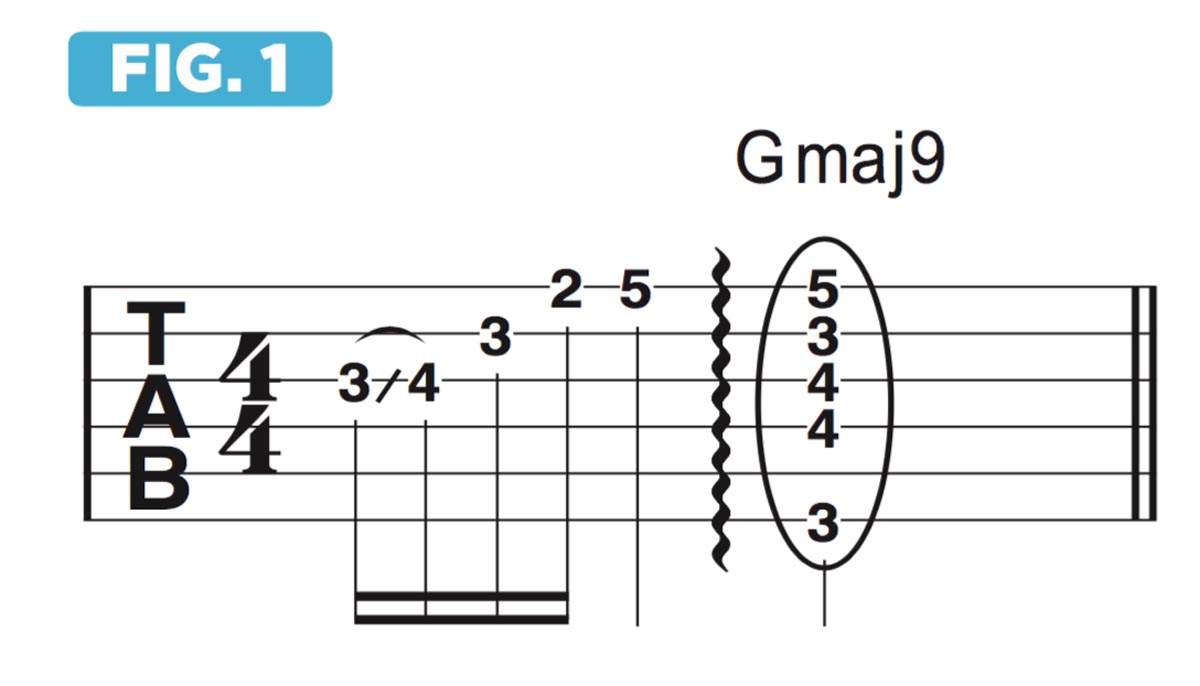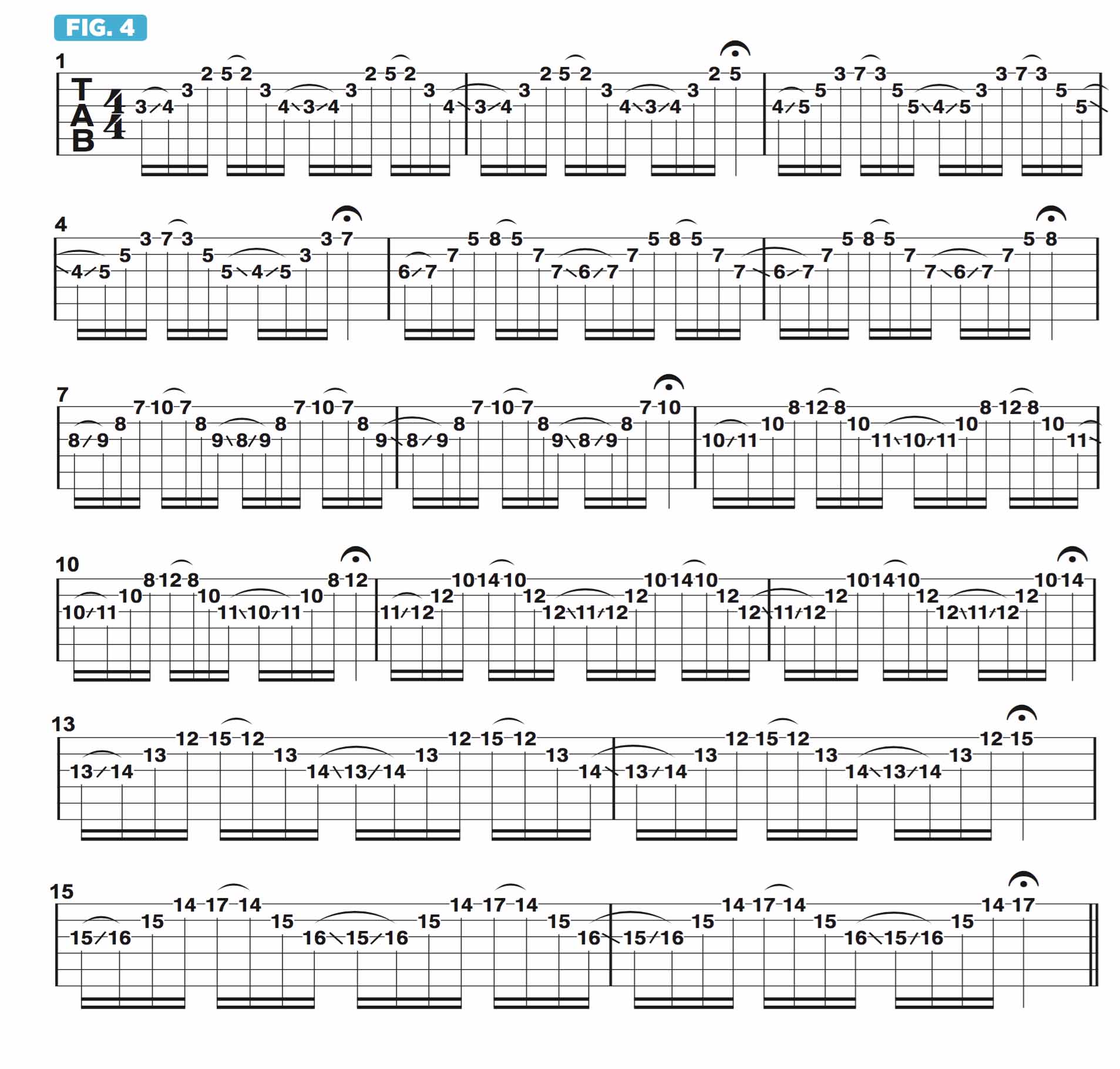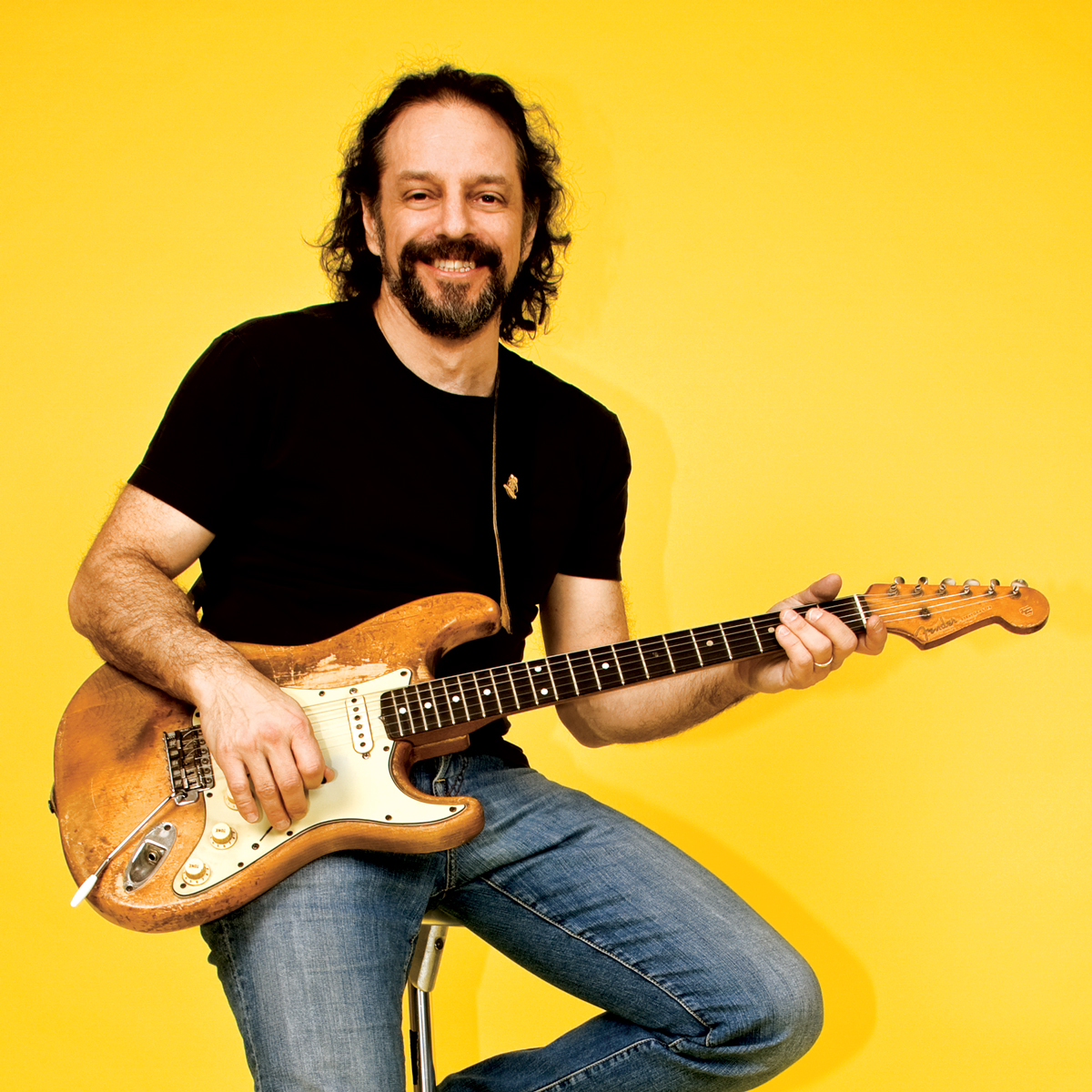Create twists and turns in your solos with four-note 7th-chord arpeggios
Expand your understanding by incorporating chromaticism and a “scalar” approach

My last column focused on four-note arpeggios based on the A Dorian mode (A, B, C, D, E, F#, G), as played on different string sets and in various areas of the fretboard. Let’s expand our look at 7th-chord arpeggios built from the A Dorian mode by incorporating chromaticism and a “scalar” approach.
An arpeggio is defined as a “broken chord,” meaning that the notes of a given chord are played individually and in succession. The chord tones are determined by playing the 1st, 3rd, 5th and 7th scale degrees; in A Dorian, these notes are A, C, E and G. When these four notes are played together, an Am7 chord is sounded.
When played individually, an Am7 arpeggio is sounded. A Dorian is considered a minor mode because the 3rd scale degree, C, is a minor 3rd, or one and one half steps, above the root note. In comparison, the major 3rd is located two whole steps above the root note. In the key of A, that note would be C#.
As detailed last month, A Dorian consists of the same seven notes as the G major scale (G, A, B, C, D, E, F#). The only difference is that the 2nd degree of the G major scale, A, is now established as the new root note (A, B, C, D, E, F#, G), which sounds the A Dorian mode, which is deemed the second mode of G major.
Figure 1 illustrates a Gmaj9 arpeggio (G, B, D, F#, A). Starting with a decorative chromatic slide from A# to B, the subsequent notes – D, F# and A – spell out the rest of the arpeggio. Bar 2 illustrates these notes played together as a Gmaj9 chord. For our purposes in this column, we will apply this note series to the key of A minor, with A as our root note throughout.
As shown in Figure 2, an Am7 chord is followed by the same arpeggiated form shown in Figure 1 but is recognized as an Am arpeggio (or more specifically, Am6sus4).
When we move the four-note arpeggios up the fretboard in a scalar fashion, reference is made to the harmonized scale, wherein chords are formed from a 1-3-5-7 pattern of stacked diatonic 3rds from each successive scale degree, as illustrated in Figure 3.
All the latest guitar news, interviews, lessons, reviews, deals and more, direct to your inbox!
We can generate a progression of four-note arpeggios by starting on each subsequent higher note of A Dorian, as shown in Figure 4.
Each pattern is played repeatedly in ascending and descending form before moving up one scale degree to the next diatonic pattern. Be sure to memorize each shape and incorporate slides and pull-offs to make each phrase sound as smooth as possible.
Guitar World Associate Editor Andy Aledort is recognized worldwide for his vast contributions to guitar instruction, via his many best-selling instructional DVDs, transcription books and online lessons. Andy is a regular contributor to Guitar World and Truefire, and has toured with Dickey Betts of the Allman Brothers, as well as participating in several Jimi Hendrix Tribute Tours.





